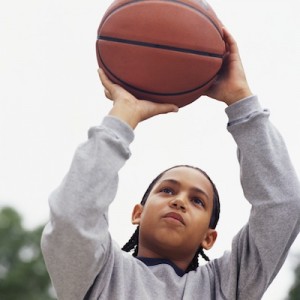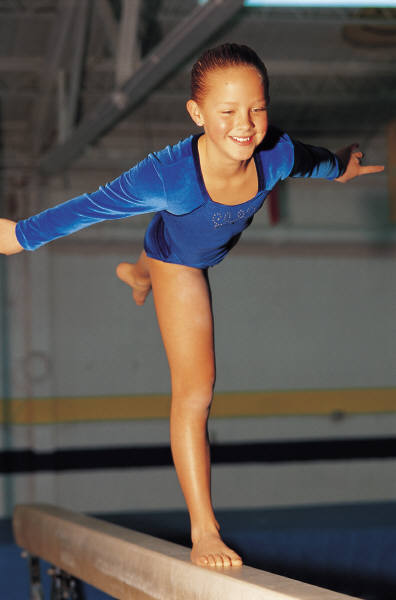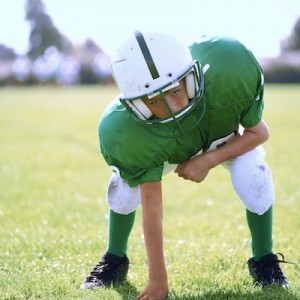Children and adolescents who play organized sports can expect to reap the benefits that we associate with athletics such as improved physical fitness and body awareness; the opportunity to contribute to a team; and the ability to learn how to win or lose with grace. As parents, you may question: Is this sport safe for my child? Of course, there can be some physical risk that comes with playing sports, and it is good to know just which sports are safe, and which ones are more likely to produce injuries.
 Sports injuries can be divided into two broad categories: repetitive injuries and traumatic injuries. Every sport involves some physical risk in one or both categories. Below you will find some of the more popular sports in the Seattle area along with the major potential risks involved. The following sports are ranked amongst the most popular youth sports in America (Matthew, 2010), or are rising quickly in popularity.
Sports injuries can be divided into two broad categories: repetitive injuries and traumatic injuries. Every sport involves some physical risk in one or both categories. Below you will find some of the more popular sports in the Seattle area along with the major potential risks involved. The following sports are ranked amongst the most popular youth sports in America (Matthew, 2010), or are rising quickly in popularity.
Basketball
 This sport ranks number one overall for the most injuries produced, with over 500,000 emergency room visits annually (Carey, 2006). Still, basketball is one of the most popular sports in America for both boys and girls (#1 for girls), and Seattle is no exception. Organized leagues can be found in the Seattle Parks and Recreation department for children as young as 10 years old.
This sport ranks number one overall for the most injuries produced, with over 500,000 emergency room visits annually (Carey, 2006). Still, basketball is one of the most popular sports in America for both boys and girls (#1 for girls), and Seattle is no exception. Organized leagues can be found in the Seattle Parks and Recreation department for children as young as 10 years old.
Basketball tends to produce lower body injuries, particularly of the knee and ankle. This is due to the high frequency of cutting movements and twisting actions that put the ligaments of the knee under significant strain. Ankle sprains are also common in basketball from running, guarding, and jumping.
Gymnastics
 Amongst girls, gymnastics also ranks high on the list of injury producing sports. Balance beam routines, back handsprings, and dismounting from the uneven bars all create the potential for an impact injury. The most common injuries include ankle sprains, bruises and contusions, and muscle strains in the back musculature. Gymnasts will fully recover from the great majority of these injuries, but there is one other common condition that bears mentioning.
Amongst girls, gymnastics also ranks high on the list of injury producing sports. Balance beam routines, back handsprings, and dismounting from the uneven bars all create the potential for an impact injury. The most common injuries include ankle sprains, bruises and contusions, and muscle strains in the back musculature. Gymnasts will fully recover from the great majority of these injuries, but there is one other common condition that bears mentioning.
Due to the extreme range of motion demands required of the lower back when performing gymnastics routines, a condition known as spondylolysis may develop over time as the young gymnast repeatedly arches the back excessively, as during a backflip or handspring. This condition is actually a small stress fracture in the lower portion of the spine. Although the fracture is stable, it can be painful and lead to chronic back pain if left untreated.
Football
 As a popular sport for children, football has traditionally gotten the worst reputation for safety. Because of the obvious physicality of the sport, parents can easily envision a multitude of injuries that could send their son to the emergency room. Chief among these concerns is the risk of a concussion, and possibly with good reason. In the past, concussions were thought to be a temporary condition often referred to on the field as “having your bell rung”; however, in recent years much study has been done on concussion injuries and suggests a longer-term problem, especially for players that sustain repetitive concussions. Some research indicates that youth may be at higher risk of concussion because their bodies are not yet fully developed (Baltimore Sun, 2011).
As a popular sport for children, football has traditionally gotten the worst reputation for safety. Because of the obvious physicality of the sport, parents can easily envision a multitude of injuries that could send their son to the emergency room. Chief among these concerns is the risk of a concussion, and possibly with good reason. In the past, concussions were thought to be a temporary condition often referred to on the field as “having your bell rung”; however, in recent years much study has been done on concussion injuries and suggests a longer-term problem, especially for players that sustain repetitive concussions. Some research indicates that youth may be at higher risk of concussion because their bodies are not yet fully developed (Baltimore Sun, 2011).
Despite this risk, it is important to note that youth football is played nationwide, most often without injuries. Parents can mitigate the risks associated with football by verifying that all coaches have received proper training on recognizing concussions, and that the league or school has a certified athletic trainer on the field at practices and games. Read about more common football injuries.
Soccer
 Soccer can be a great youth sport. Before kids branch out into other highly technical sports such as hockey or lacrosse, they probably were enrolled in a youth soccer league. The Seattle Youth Soccer Association carries 16 teams throughout the city with leagues staring for players in the under-6 age bracket. It is easily accessible, relatively inexpensive, and produces a low number of injuries. However, as players mature and the game becomes more competitive, there are some injuries that tend to occur. The cutting and twisting actions as well as contact from slide-tackles seen in older players makes knee injuries somewhat of a concern. There is also some moderate concern about concussion risk from heading the ball, but not nearly as much as with collision sports such as football. But relatively speaking, soccer remains one of the safer sports for children and teens.
Soccer can be a great youth sport. Before kids branch out into other highly technical sports such as hockey or lacrosse, they probably were enrolled in a youth soccer league. The Seattle Youth Soccer Association carries 16 teams throughout the city with leagues staring for players in the under-6 age bracket. It is easily accessible, relatively inexpensive, and produces a low number of injuries. However, as players mature and the game becomes more competitive, there are some injuries that tend to occur. The cutting and twisting actions as well as contact from slide-tackles seen in older players makes knee injuries somewhat of a concern. There is also some moderate concern about concussion risk from heading the ball, but not nearly as much as with collision sports such as football. But relatively speaking, soccer remains one of the safer sports for children and teens.
Baseball
 Nothing signals the onset of spring like the start of baseball season. Boys across Seattle and the entire nation look forward to starting high school or little league season every year. Of course, while the thought of getting struck with a line drive is of some concern, the risks here are mostly repetitive. Constant throwing may cause the humerus (arm bone) to grow in an outwardly rotated position, predisposing the athlete to shoulder injuries later in life. The other concern is with “little leaguer’s elbow”, which is damage to the ligaments and growth plates in the elbow. This could potentially lead to abnormal growth in the player’s elbow. Limiting a player’s pitching time can mitigate risks in baseball. League rules mandate rest schedules for pitchers, but as a parent, you can keep your child injury free by monitoring practice sessions as well and following the pitch count limits for your child’s age established the USA Baseball Medical and Safety Advisory Committee.
Nothing signals the onset of spring like the start of baseball season. Boys across Seattle and the entire nation look forward to starting high school or little league season every year. Of course, while the thought of getting struck with a line drive is of some concern, the risks here are mostly repetitive. Constant throwing may cause the humerus (arm bone) to grow in an outwardly rotated position, predisposing the athlete to shoulder injuries later in life. The other concern is with “little leaguer’s elbow”, which is damage to the ligaments and growth plates in the elbow. This could potentially lead to abnormal growth in the player’s elbow. Limiting a player’s pitching time can mitigate risks in baseball. League rules mandate rest schedules for pitchers, but as a parent, you can keep your child injury free by monitoring practice sessions as well and following the pitch count limits for your child’s age established the USA Baseball Medical and Safety Advisory Committee.
Multi-season play should also be avoided. In warmer climates, baseball is often played year round, but here in Seattle, that is less of a concern due to the winter weather patterns. If these guidelines are followed, baseball should be a fun and safe sport for your young athlete. Read more on common baseball injuries.
Find OSS on Facebook, Google+, and follow on Twitter to keep up to date on new articles and news.
